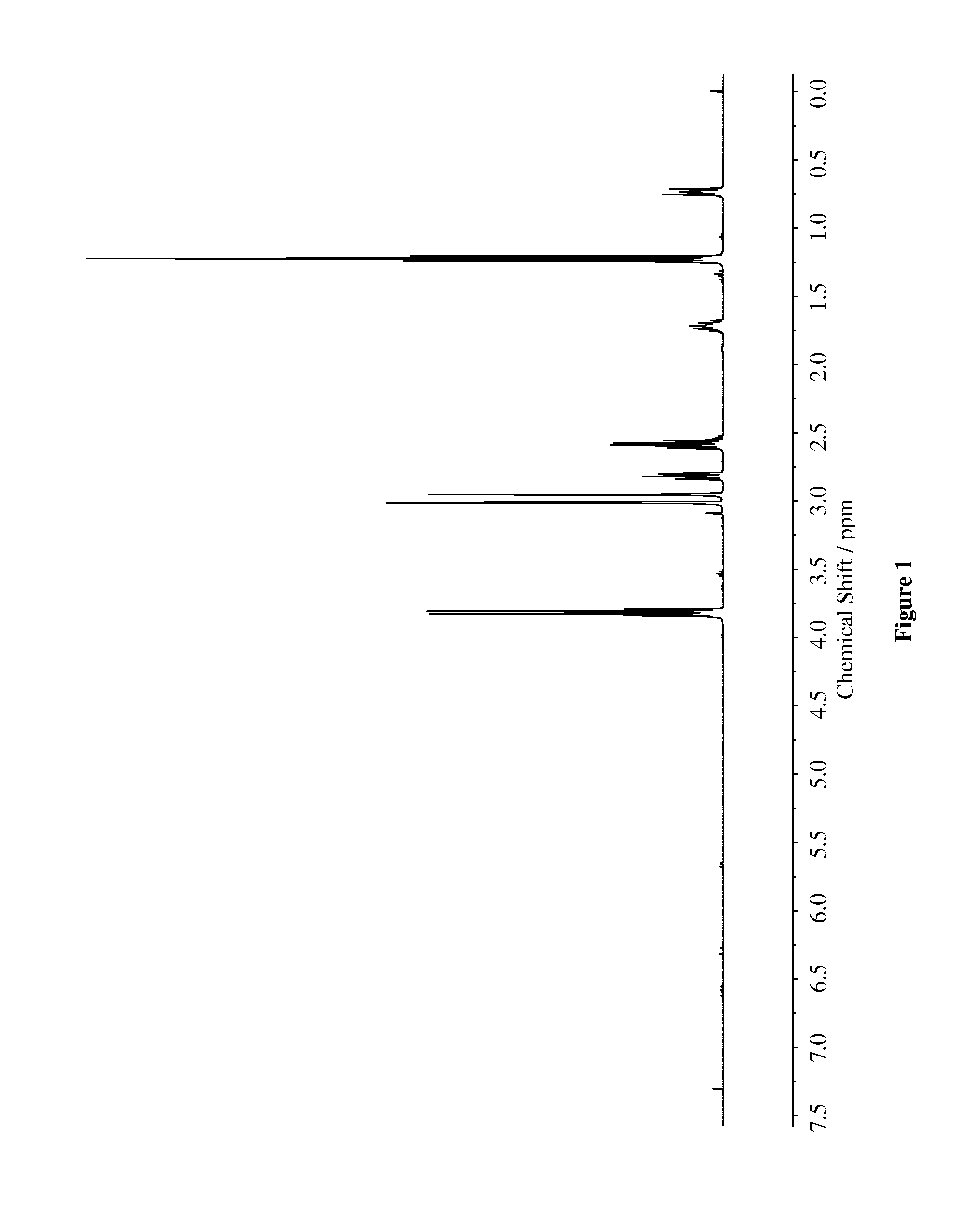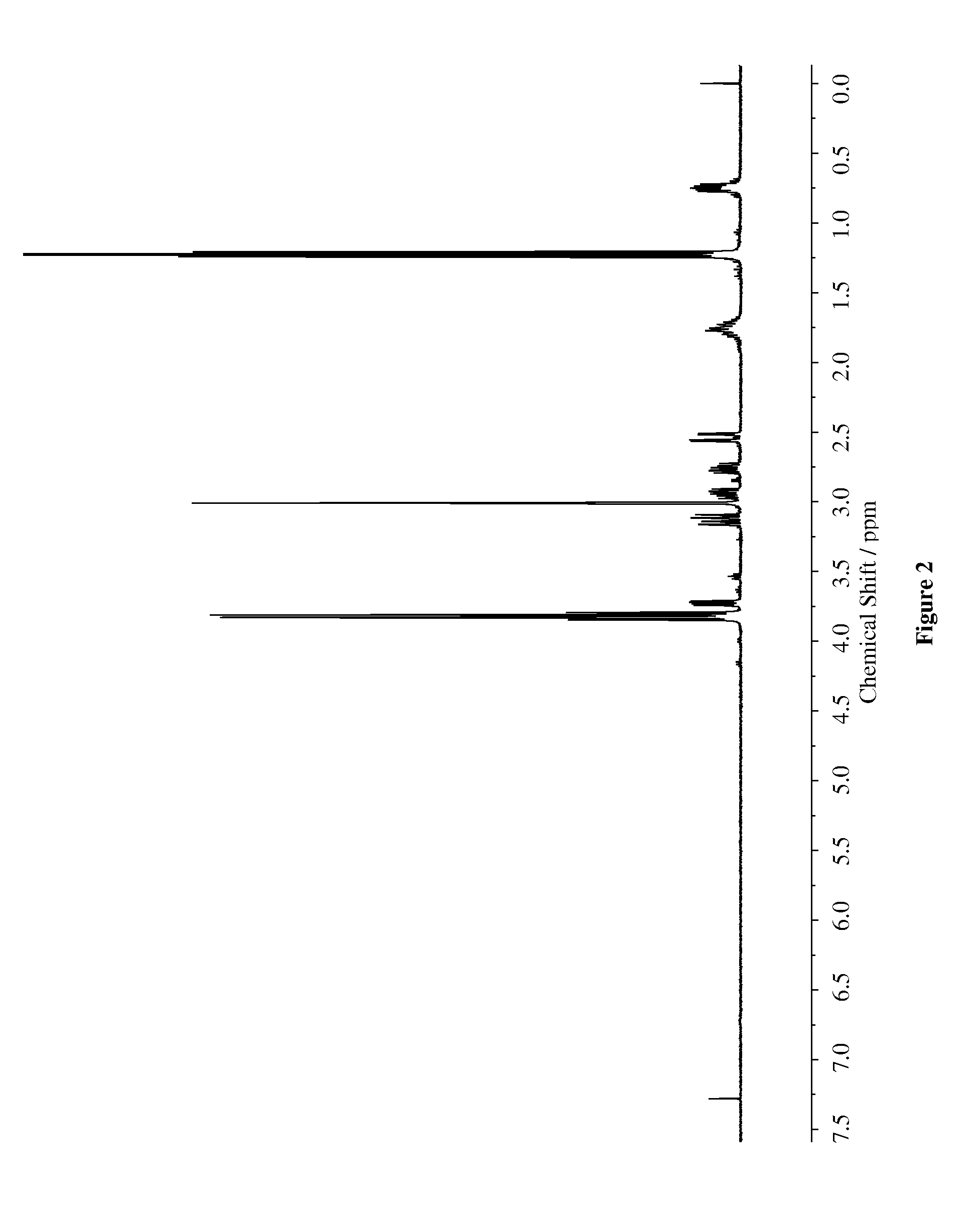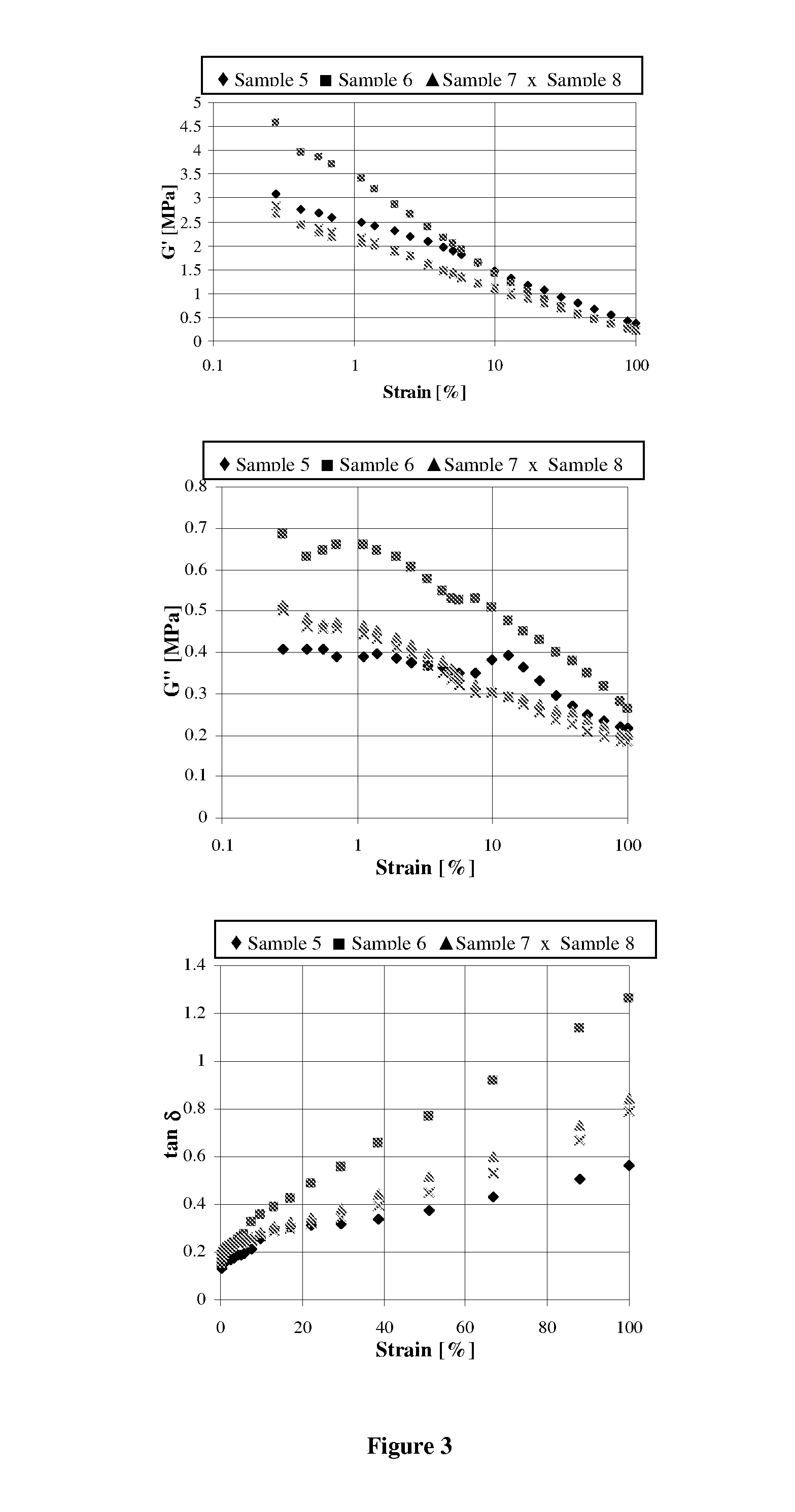Functionalized polymer, rubber composition and pneumatic tire
a technology of functionalized polymers and rubber compositions, applied in the field of functionalized polymers, can solve the problems of low polymer hysteresis and provide a lower level of tire rolling resistance, and achieve the effects of improving the affinity of fillers, improving the interaction of polymer/filler, and low cos
- Summary
- Abstract
- Description
- Claims
- Application Information
AI Technical Summary
Benefits of technology
Problems solved by technology
Method used
Image
Examples
example 1
Synthesis of propaneamide, N,N-dimethyl-3-[[3-(triethoxysilyl)propyl]thio]-
[0072]Synthesis of siloxy functionalized acrylamide is based on thiol-ene reaction mechanism in which thiol is 3-mercaptopropyltriethoxysilane and ene is N,N-dimethylacrylamide. Triethylamine was used as catalyst which initiates the formation of enolate in synthesis of the siloxy functionalized acrylamide.
[0073]To a stirred solution of 3-(mercaptopropyl)triethoxysilane (30 mmol) in 50 mL of anhydrous ethanol was added N,N-dimethylacrylamide (30 mmol) at ambient temperature. To the solution of reactants was added triethylamine (30 mmol) and resulting solution was stirred at ambient temperature for 48 h. The mixture was concentrated under reduced pressure and dried overnight in Schlenk line. The product was obtained in 90% yield. The synthesized compound was characterized via 1H-NMR (400 MHz) and HPLC (88.4% purity). The chemical structures were characterized via NMR (400 MHz) as shown in FIG. 1.
example 2
Synthesis of 2,5-pyrrolidinedione, 1-methyl-3-[[3-(triethoxysilyl)propyl]thio]-
[0074]Synthesis of siloxy functionalized maleimide is based on thiol-ene reaction mechanism in which thiol is 3-mercaptopropyltriethoxysilane and ene is N-methylmaleimide. Triethylamine was used as catalyst which initiates the formation of enolate in synthesis of siloxy functionalized maleimide.
[0075]To 250 mL round bottomed flask, maleimide (30 mmol) and 50 mL ethanol was added. To this solution 3-(mercaptopropyltriethoxysilane) (30 mmol) and triethylamine (15 mmol) was added and mixture was stirred for 2.5 h at ambient temperature. The mixture was concentrated under reduced pressure and dried overnight in Schlenk line. The product was obtained in 91% yield. The synthesized compound was characterized via 1H-NMR (400 MHz) and HPLC (95.8% purity) / The chemical structures were characterized via NMR (400 MHz) as shown in FIG. 2.
example 3
Co-Polymerization of Styrene and Butadiene
[0076]Polymerizations were done in a 1 gallon reactor at 65° C. Monomer premix of styrene and butadiene was charged into reactor with hexane as solvent followed by addition of modifier (TMEDA) and initiator (n-butyllithium). When the conversion was above 98%, the polymerizations were terminated with isopropanol or with functional terminator propanamide, N,N-dimethyl-3-[[3-(triethoxysilyl)propyl]thio]- from Example 1, or 2,5-pyrrolidinedione, 1-methyl-3-[[3-(triethoxysilyl)propyl]thio]- from Example 2.
[0077]The polymers obtained were characterized using different techniques, for example, size exclusion chromotography (SEC) for determination of molecular weight, dynamic scanning calorimetry (DSC) for determination of Tg, IR for determining cis, trans, styrene and vinyl content, and Mooney viscosity measurements with results given in Tables 1 and 2.
TABLE 1OverallMnPolymer Sample(g / mol)PDI1:Sulfanylsilane-SBR1250,0001.42(Comparative)2:SBR2 (Cont...
PUM
| Property | Measurement | Unit |
|---|---|---|
| particle diameter | aaaaa | aaaaa |
| temperatures | aaaaa | aaaaa |
| temperatures | aaaaa | aaaaa |
Abstract
Description
Claims
Application Information
 Login to View More
Login to View More - R&D
- Intellectual Property
- Life Sciences
- Materials
- Tech Scout
- Unparalleled Data Quality
- Higher Quality Content
- 60% Fewer Hallucinations
Browse by: Latest US Patents, China's latest patents, Technical Efficacy Thesaurus, Application Domain, Technology Topic, Popular Technical Reports.
© 2025 PatSnap. All rights reserved.Legal|Privacy policy|Modern Slavery Act Transparency Statement|Sitemap|About US| Contact US: help@patsnap.com



